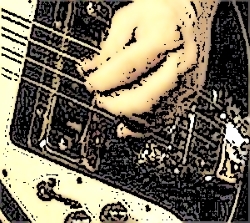Many a new bass player starts with thumping out the notes in the chords of a song. They are mixed then as low-end filler.
As they progress in their skill as a bassist, are you still mixing them as an afterthought?
Sitting in the sanctuary, I watched the worship band practice. Most everyone sounded great.
And then there was the bassist. He was playing the triad notes of the chords in the song’s chord progression. Nothing inspiring. He was, at most, adding to the low-end of the song. This was well over 20 years ago and before I started working in audio, but I could tell what was lacking.
Years later, I’ve seen this same bassist and he’s become a great bass player. He can play funk, pop, rock and county.
Each of these styles has a different bass sound. And each of these requires a different type of mixing.
Let’s get to proper mixing. The sound of the bass is more than just a low-end addition.
The sound of the bass affects:
—the sound of the instrument
—the sound of the song
—the feeling of the congregation about the worship
If you’ve ever listened to a bass solo in jazz or even in rock or county, it’s obvious that the bass has a distinct sound. This comes from how the musician is playing the bass but also the genre of music.
Therefore, let’s look at how you can get the best sound for the instrument, for the song, and mix it in a way that supports the worship experience.
The Frequency Range of a Bass
The low E on the bass runs around 40 Hz.
Now just up two octaves to another E and you have 165 Hz. This doesn’t mean the bass frequencies only exist below 200 Hz.
Just like any instrument, by the time you look at the fundamentals and the harmonics, you can be looking frequencies as high as 6-7 kHz.
It’s easy to think of the bass only as “low end” but as you can see, it’s so much more than that.
Let’s examine how you can alter these frequencies for a better sounding bass.





















